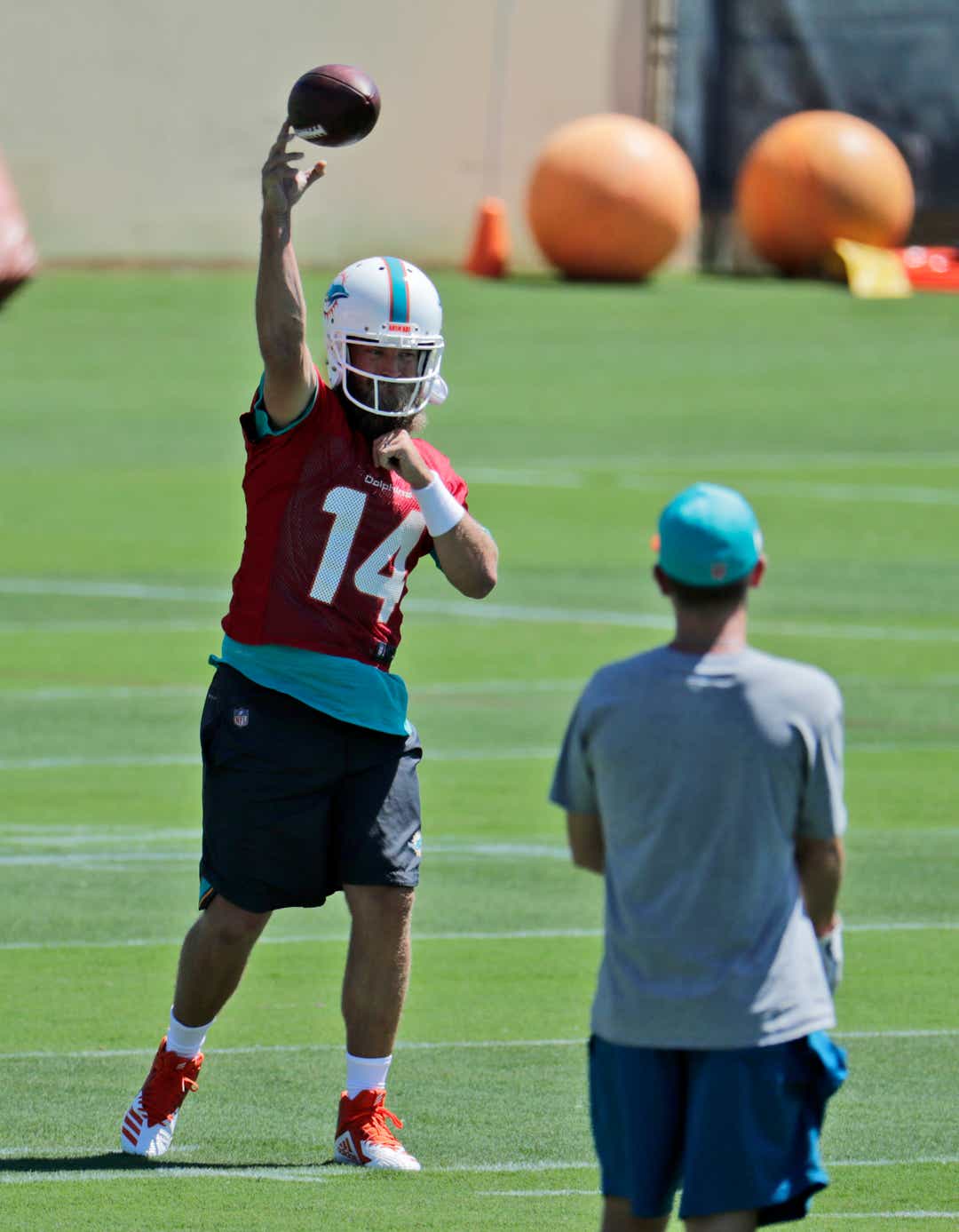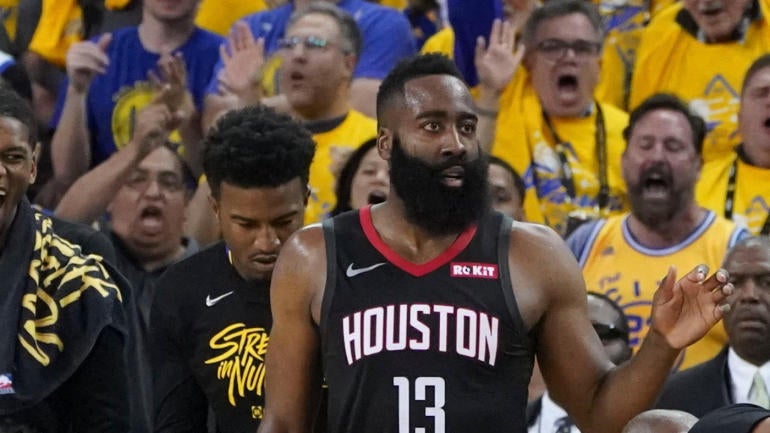Nate Davis
USA TODAY
Published 6:32 AM EDT Apr 30, 2019
The 2019 NFL draft now complete, the roster-building process for the league's 32 teams is basically complete heading into next season.
Sure, clubs will tinker — prominent free agents like Ndamukong Suh, Eric Berry, Michael Crabtree and Ziggy Ansah remain unsigned. But even with the writing on the wall for veterans like the Giants' Eli Manning, Broncos' Joe Flacco and Bengals' Andy Dalton — each of their teams just selected a quarterback — their starting jobs appear safe for Week 1, at minimum, and probably all year.
However other established players could find themselves on the move. For example, with first-round ILB Devin Bush in the fold, the Steelers cut Jon Bostic, who started 14 games last season, after the draft ended Saturday evening.
Here are a few others whose jobs suddenly look tenuous given the rookies headed in their direction:
Eagles WR Nelson Agholor: For a guy who's never topped 800 receiving yards in a season, the $9.4 million on his fifth-year option might be more cheddar than Philly wants to swallow — especially with second-round WR J.J. Arcega-Whiteside entering the mix alongside veterans Alshon Jeffery and DeSean Jackson.
Patriots P Ryan Allen: One of the unsung heroes of Super Bowl LIII, it appears that will be his final game for New England. Bill Belichick didn't spend a fifth-rounder on Stanford's Jacob Bailey with the intent of keeping two punters — especially since only $100,000 of Allen's $1.5 million salary for 2019 is guaranteed.
Dolphins QB Ryan Fitzpatrick: Hope you had plenty of cake during your honeymoon as Miami's starter given the new coaching staff has every incentive to take a long look at newly acquired Josh Rosen in order to determine how he fits into this franchise's future. Fitzpatrick could be an instant trade asset if another team's quarterback goes down in the months ahead.
Chiefs WR Tyreek Hill: There's no performance issue here, Hill garnering Pro Bowl honors in all three of his NFL seasons and named an all-pro receiver for the first time in 2018. But after the Johnson County (Kan.) District Attorney's office reopened an investigation into whether he abused his 3-year-old son — four years after Hill pleaded guilty to domestic assault and battery of his current fiancée — it appears increasingly likely he won't be a member of this team. How else to explain Kansas City's decision to spend its first pick (56th overall) on WR Mecole Hardman, whose game is similar to Hill's even if the talent level isn't the same, despite the club's defensive issues and fact WR Sammy Watkins signed a three-year, $48 million contract just last year?
NFL DRAFT: 32 things we learned in 2019
STEALS: D.K. Metcalf, Greedy Williams among best value picks
2020 NFL DRAFT: Tua Tagovailoa, Justin Herbert headline class
Eagles RB Jordan Howard: Acquired from the Bears in a March trade, he's only under contract for 2019 and may find himself fighting for snaps behind second-rounder Miles Sanders, who might be the most explosive and versatile back on a jumbled depth chart. Howard could be another guy who gets moved if another team's starting back goes down this summer.
Patriots QB Brian Hoyer: Tom Brady's 33-year-old backup is under contract for one more year. And though it might make sense to carry three passers, given Auburn's Jarrett Stidham arrived in the fourth round, New England was comfortable keeping only Brady and Jimmy Garoppolo in 2014, the latter's rookie season.
Giants CB Janoris Jenkins: He hasn't lived up to the five-year, $62.5 million contract he signed in 2016, and his name was floating around at the trade deadline last October. More telling, the Giants just added two corners (Deandre Baker and Julian Love) after taking Sam Beal in the 2018 supplemental draft. Could this be an odd man out situation given Jenkins' money and performance?
Raiders S Karl Joseph: Over the past six weeks, Oakland signed Lamarcus Joyner to a four-year, $42 million deal, then chose hard-hitting Johnathan Abram in the first round. Where does that leave Joseph, whose fifth-year option has not yet been picked up? "I think that's a conversation we'll have with Karl," GM Mike Mayock said when asked about the former first-rounder's future.
Bills RB LeSean McCoy: He did wonders in a limited offense for several years before suffering a sharp decline in production in 2018 (514 rushing yards in 14 games). With fellow vet Frank Gore now aboard, along with third-rounder Devin Singletary and his fresh legs, it's worth wondering if McCoy might wind up as trade bait or a cap casualty.
Cardinals DL Robert Nkemdiche: He's been a massive disappointment since being taken in Round 1 three years ago. Arizona has yet to pick up his fifth-year option and, after securing Boston College's Zach Allen in Round 3, could decide they don't need Nkemdiche much longer.
Vikings TE Kyle Rudolph: He's owed $7.6 million heading into the final year of his contract and didn't play up to that kind of salary last season. Multi-dimensional second-rounder Irv Smith Jr. will take Rudolph's targets (and job) at some point, it's just a matter of when.
Redskins QB Alex Smith: His ongoing recovery from last year's horrible leg injury casts his NFL future in serious doubt. But with Washington taking Ohio State's Dwayne Haskins in the first round — and journeymen Case Keenum and Colt McCoy under contract for 2019 — it's worth wondering if Smith has played his final snap in the nation's capital, or if he and the team are comfortable with the thought of him potentially returning to a backup role in 2020.
49ers DL Solomon Thomas: Even after picking DE Nick Bosa second overall, GM John Lynch said Thursday that Thomas, the heretofore underperforming No. 3 overall pick in 2017, was "absolutely" part of the team's plans going forward despite a glut of high-priced players on San Francisco's D-line. Lynch is a pretty straight shooter, but it wouldn't be shocking if things changed — especially if he gets an offer in, say, training camp and decides the team and Thomas could both benefit from a change of scenery.
***
Follow Nate Davis on Twitter @ByNateDavis
Let's block ads! (Why?)
https://www.usatoday.com/story/sports/nfl/draft/2019/04/30/nfl-draft-2019-veterans-notice-ryan-fitzpatrick/3615899002/
2019-04-30 10:32:00Z
CAIiEP3IveBqvsuu27EIB_V0QkUqGQgEKhAIACoHCAowjsP7CjCSpPQCMM_b5QU


































